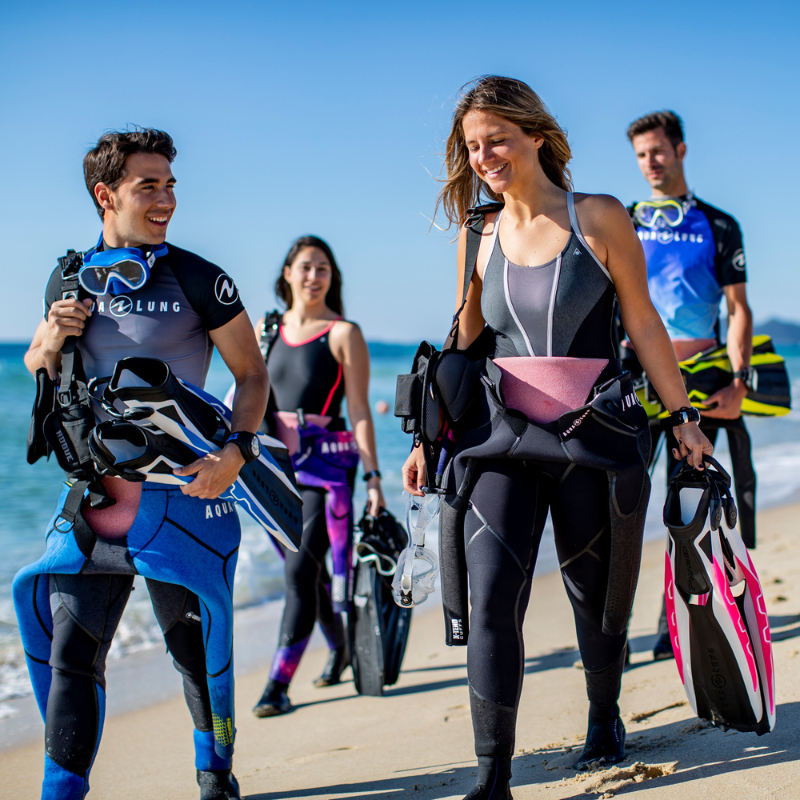Buying vs. Renting Gear
 For the avid diver, the question of “buy or rent” is a simple one. Rental equipment on a 10 day trip averages over $300. In many cases, the gear is older and of lower quality and might even have an unknown service history. A good rule of thumb is if you plan to do at least three dive trips in your life, it’s less expensive, more comfortable, and safer to purchase your own Total Diving System. There’s also something to be said for peace of mind. When you have your own gear, are comfortable using it, and know that it’s been serviced and cared for, you tend to rest a little easier during the dive trips.
For the avid diver, the question of “buy or rent” is a simple one. Rental equipment on a 10 day trip averages over $300. In many cases, the gear is older and of lower quality and might even have an unknown service history. A good rule of thumb is if you plan to do at least three dive trips in your life, it’s less expensive, more comfortable, and safer to purchase your own Total Diving System. There’s also something to be said for peace of mind. When you have your own gear, are comfortable using it, and know that it’s been serviced and cared for, you tend to rest a little easier during the dive trips.
Wetsuit – This close-fitting neoprene garment helps regulate body temperature. It should be comfortable and fit properly or running low on air won’t be the reason you’re getting out of the water. Different suits have different buoyancy characteristics, which necessitates adjusting your ballast weight time and time again. Having your own wetsuit ensures a custom-fit and ease of donning.
 Regulator – If the idea of sharing a mouthpiece with countless other divers doesn’t appeal to you, you’re not alone. Then there’s the safety value. Once you’ve seen a regulator come apart underwater, you quickly discover the value in owning your own air delivery system.
Regulator – If the idea of sharing a mouthpiece with countless other divers doesn’t appeal to you, you’re not alone. Then there’s the safety value. Once you’ve seen a regulator come apart underwater, you quickly discover the value in owning your own air delivery system.
Buoyancy Compensation Device – This inflatable jacket is the critical piece of equipment that holds all your life-support equipment and lets you establish positive, negative, or neutral buoyancy. Having a properly fitted and functioning BCD is critical to ensure diver comfort and safety.
Mask/Snorkel/Fins - We realize that many people want to pack as small as possible and look at these items as an inconvenience in your bag. However, relying on a shop at your destination to have a mask that fits you, a snorkel that is clean, and fins that are appropriate for your activity is a chance at a bad experience. Plus, the cost of renting can in many cases be close to the cost of buying. These personal fit items are too important to chance.
